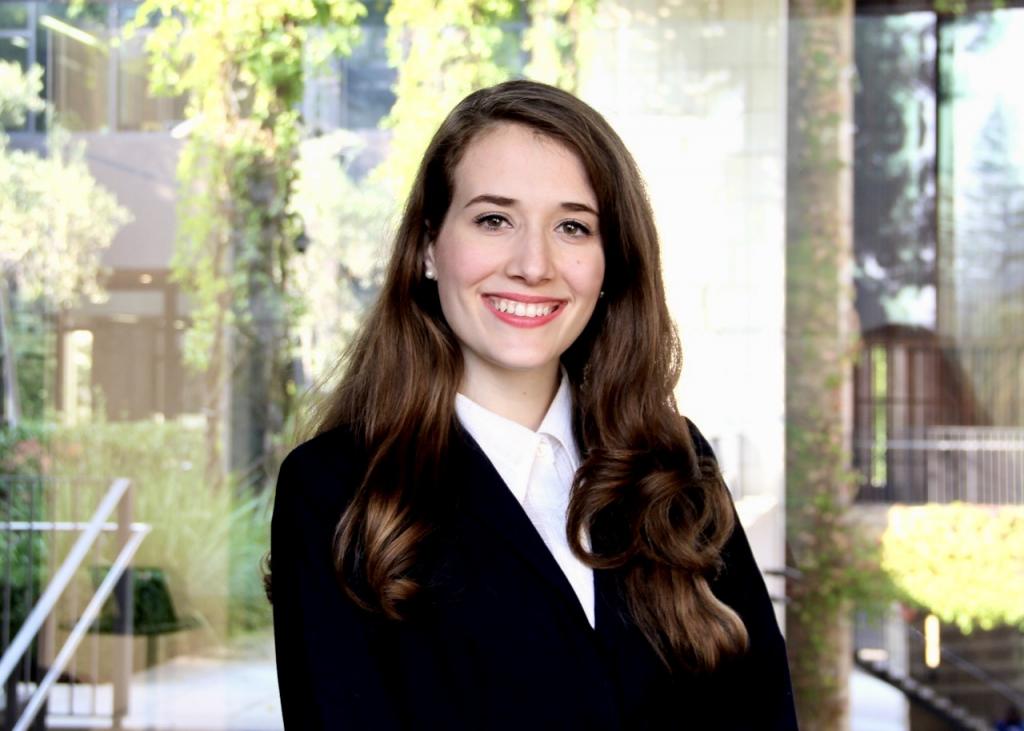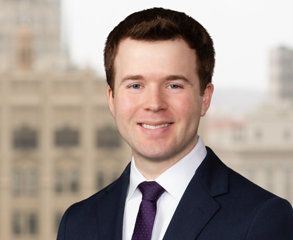The 2020 Minnesota Primary in the Wake of the Coronavirus
Minnesota has already made several changes to support voters amid the pandemic. But the state continues to face some significant challenges in the run-up to November.

Published by The Lawfare Institute
in Cooperation With

Lawfare is partnering with the Stanford-MIT Healthy Elections Project to produce a series on election integrity in the midst of the coronavirus crisis. The Healthy Elections Project aims to assist election officials and the public as the nation confronts the challenges that the coronavirus pandemic poses for election administration. Through student-driven research, tool development, and direct services to jurisdictions, the project focuses on confronting the logistical challenges faced by states as they make rapid transitions to mail balloting and the creation of safe polling places. Read other installments in the series here.
Minnesota held a successful presidential primary on March 3, just three days before the state confirmed its first coronavirus case. Months later, the state tested its new measures to address coronavirus concerns for the first time during Minnestota’s Aug. 11 primary for state and federal legislators. The August primary also enabled officials to identify election issues before the Nov. 3 general election.
Given Minnesota’s historically high voter turnout, the state will need to prepare for a significant increase in absentee ballots while maintaining in-person polling options despite a reduced workforce, centralization of polling locations and social distancing requirements. To address some of these concerns, Minnesota has instituted changes to its absentee ballot procedures and passed legislation to give more time and resources to local election officials. But challenges remain, especially given inconsistent messaging on new election procedures from Minnesota’s counties, which are largely responsible for administering the elections.
Our full report on Minnesota can be found here.
The March 3 Primary Election
Minnesota held a primary specifically for the presidential nomination on March 3, before the state confirmed its first coronavirus case. More than 880,000 ballots were cast in the primary, which accounted for just over 25 percent of Minnesota’s registered voting population. By contrast, only 318,000 Minnesotans participated in the 2016 caucus. Primary turnout likely significantly increased this year because Minnesota switched from a caucus system to a primary election after the 2016 election.
Minnesota has offered no-excuse absentee voting since 2014, an option that has become increasingly popular among Minnesota voters in recent years. More than 66,135 voters cast absentee ballots in the presidential primary, and the state did not report any difficulties with processing absentee ballots.
Registered voters were able to vote at their usual polling place on March 3. Most polling places were open from 7 a.m. to 8 p.m. Because Minnesota’s first coronavirus case was not officially confirmed until three days after the presidential primary, there were no reported coronavirus-related difficulties with in-person voting in Minnesota for the March 3 primary.
Nonetheless, there were some problems during the primary. For example, on March 3, Minnesota voters discovered that a link on the secretary of state’s website sent voters to another website called Bold Progressive that supported Democratic presidential candidate Elizabeth Warren. When voters attempted to find their local polling places (at pollfinder.sos.state.mn.us), they were redirected to BoldProgressive.org, a progressive political action committee with no affiliation to state election officials. Minnesota Secretary of State Steve Simon acknowledged that the redirect was a result of a “serious lapse of judgment” by a staff member, who had linked Bold Progressive’s polling place information. The redirect was up on the secretary of state’s website for 17 minutes until it was pulled down.
Minnesota’s Coronavirus Response
Health officials confirmed Minnesota’s first coronavirus case on March 6, just three days after the March primary. Governor Tim Walz issued an order to close all schools on March 15 and a second order to close all nonessential businesses on March 16. On March 25, Walz issued Minnesota’s first statewide stay-at-home order. The order instructed residents to shelter-in-place, with exceptions for outdoor activities, grocery store trips, essential work, and relocation for victims of domestic violence and abuse. The order was extended until at least May 17. At the time the government announced the stay-at-home order, there were about 287 confirmed cases in the state. However, health officials estimated that the number of cases was likely “at least 10 times as high.”
Though the shelter-in-place order has since been lifted, the government continues to impose public health restrictions. Noncritical businesses, like retail stores and salons, must operate at 50 percent capacity. In addition, outdoor gatherings of more than 25 people and indoor gatherings of more than 10 people are prohibited. As of Sept. 11, Minnesota had more than 82,000 confirmed coronavirus cases and 1,884 deaths.
Preparations for the Aug. 11 Primary and Nov. 3 General Election
Minnesota held its second primary election this year on Aug. 11 for the U.S. Senate, most of the state’s U.S. House seats and dozens of state legislative seats. In March, Secretary Simon encouraged voters to submit their ballots by mail in the Aug. 11 primary in order to minimize the spread of the coronavirus. Voters were able to request absentee ballots for the August primary starting in mid-May.
In the first week alone, more than 36,000 Minnesota voters submitted requests for absentee ballots, compared to just 170 requests in 2016. Approximately 644,000 absentee ballots were requested in the August primary. Furthermore, in response to litigation, Simon suspended the witness requirement for absentee ballots for the Aug. 11 primary and extended the deadline to receive and count ballots to two days after the primary. For the Nov. 3 general election, Simon waived the witness requirement for absentee ballots and agreed to count absentee ballots that were postmarked on or before Election Day but received up to one week after.
Simon also urged state legislators to pass a bill that would allow every registered voter in Minnesota to automatically receive a ballot in the mail. But Republican state lawmakers opposed the Secretary’s proposal to expand mail-in voting and instead proposed adding new polling places.
On May 14, Governor Walz signed into law HF 3429, which provided additional election support to address voting concerns amid the pandemic. The bill, which had passed the Minnesota Senate almost unanimously in a 66-1 vote, opened up $17 million in federal aid to allow the state to invest in greater safety and sanitation practices at in-person polling locations, add more polling places to reduce crowding and meet the increased demand for vote-by-mail. The legislation also gave state and local elections officials more flexibility to find new polling locations until July 1.
But the bill has several shortcomings. For one, HF 3429 did not adopt Simon’s proposal to automatically send absentee ballots to all registered voters. It also prohibited counties from using schools as polling sites unless no other public or private locations are reasonably available for use. Because of this new regulation and a dearth of poll workers, several cities (for example, Brainerd and Austin) reduced the number of polling places. Others cities, such as Winona and Northfield, changed polling locations without adding or decreasing polling sites, which may have contributed to voter confusion.
Minnesota also received $6.9 million in funding under the CARES Act, which released Help America Vote Act funds to assist states in conducting elections during the pandemic. Including the required 20 percent matching state funds, Minnesota allotted a total of $8.5 million for election administration under the CARES Act..
For the Aug. 11 primary election, Simon encouraged local jurisdictions and voters to follow safety measures provided by the Centers for Disease Control and Prevention (CDC). This guidance included social distancing of six feet between voters; equipment sanitization; and hygienic measures such as providing masks, hand sanitizer and no-touch trash cans. The CDC also suggested the use of cloth face coverings as an additional measure, but not as a replacement for social distancing. Both election officials and voters in Minnesota were required to wear masks.
In addition, state officials encouraged jurisdictions to increase their curbside voting operations. Simon stated that curbside voting would be available for anyone unable to enter a polling place for any reason, including for the November election. When a voter opts for curbside voting, two election judges will bring a ballot to the voter’s vehicle and return it once the voter is done voting from their vehicle.
Legal Challenges to Vote-by-Mail
Minnesota made several major vote-by-mail procedural changes in response to legal and political pressure. On June 16, in response to three lawsuits, Minnesota agreed to suspend the witness requirement for absentee ballots of registered voters for the upcoming Aug. 11 primary. Under the consent decree, absentee voters received notices regarding the suspension of the witness requirement, and the secretary of state educated the public about this temporary change. Further, counties were required to count all ballots received up to two days after Election Day, so long as they were postmarked on or before Election Day.
A separate consent decree was entered for the Nov. 3 general election. The second consent decree also suspended the witness requirement but provided that the secretary of state will count ballots postmarked on or before Election Day but received up to one week afterward, rather than the previous two-day grace period.
The consent decrees followed three lawsuits against the secretary of state filed in mid-May and early June. One suit sought to strike down two Minnesota laws: one that requires that absentee ballots be witnessed by a Minnesota voter, notary, or person authorized to administer oaths before submission; and another requiring that absentee ballots be received by certain times on Election Day, depending on the delivery method. The consent decrees were formally entered in this case. The other two suits also sought to suspend the witness requirements and asked the state to mail absentee ballots to every registered voter.
Remaining Logistical Challenges
Even with enhanced support from new legislation and revised election procedures in Minnesota, concerns and logistical issues remain. The number of absentee ballot applications for the Aug. 11 primary soared compared to previous years. More than 644,000 absentee ballots were requested this year amid coronavirus concerns. Ultimately, 543,652 of the 912,714 ballots cast in the August primary were absentee ballots. Voter turnout also tripled compared to the 2016 primary. Minneapolis expected up to half of its ballots to come by mail or early voting—and results indicate that in fact two-thirds of ballots were absentee. Officials now expect up to 70 percent of votes in Minnesota’s November general election to be cast as absentee ballots.
To meet the staggering demand for absentee ballots, counties have used funds from HF 3429 to increase staff and purchase personal protective equipment for their election workers. This surge in absentee ballot applications has significantly increased the workload of state and local elections officials. HF 3429 was signed to provide polling places with increased funding to better manage in-person and absentee voting during the pandemic. On average, each county received $54,000 from the legislation. The bill also enabled local officials to begin processing mailed ballots and in-person early votes 14 days before Election Day, rather than the typical period of 7 days.
And because election officials are now allowed to count ballots postmarked up to one week after the Nov. 3 general election, Minnesota will likely need to delay beyond election night in announcing any results. An increase in mail-in ballots due to the coronavirus may also warrant such a delay to ensure that all votes are accounted for. Secretary Simon echoed this same warning prior to the Aug. 11 election, cautioning that the primary would be a “different kind of election night” and that Minnesotans will not “get that instant gratification that [they’re] used to.”
The new absentee voting procedures under the consent decrees also demand an increase in election staff. The consent decrees, the first of which was entered into right before early voting began for the Aug. 11 primary, requires state and local elections officials to notify voters of the changes to the witness requirement and deadline to receive ballots. In Minneapolis, for example, election staff had to quickly mobilize and replace the voting instructions for thousands of ballot envelopes that they had previously prepared to send out to voters. And there’s a further complication that makes it even more difficult to beef up the need for more election staff: This shortage comes at a time when the usual source of staff—senior citizens—is especially vulnerable to the coronavirus.
Conclusion
Minnesota election officials should prepare to address these challenges for the November election:
- Resource constraints: Local resources and election judges needed to staff polling locations and count absentee ballots are limited. State officials have called for younger people to apply to be election judges or poll workers and for additional staffing to administer the election.
- Reduction in polling locations: Some counties have reduced the number of polling locations due to restrictions against using schools as polling sites.
- Delay in election results: Minnesota will count ballots postmarked on Election Day and received up to one week after the Nov. 3 general election. Because the state anticipates an increase in absentee voting due to fears of the coronavirus, election officials and local news likely will not be able to announce official winners on election night given the extra time needed to count all ballots.
- Processing absentee ballots: With both overall turnout and absentee ballot numbers eclipsing estimates for the Aug. 11 primary, officials will need to scale up their ballot processing to meet higher estimates for November.
- Confusion regarding witness requirement: Because of a partial legal settlement, Minnesota has suspended the witness requirements for absentee balloting, but this policy change must now be clearly communicated to voters to avoid procedural confusion.









